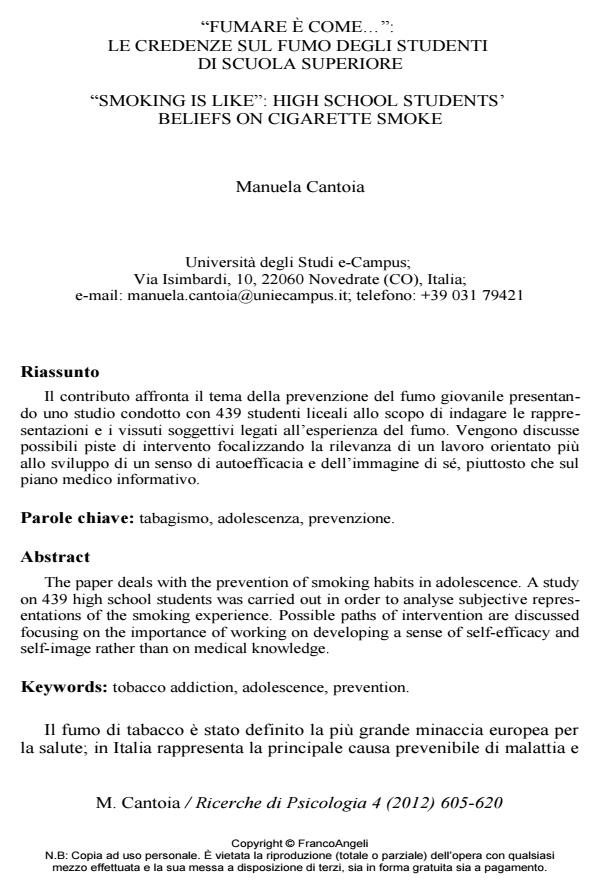"Fumare è come..": le credenze sul fumo degli studenti di scuola superiore
Titolo Rivista RICERCHE DI PSICOLOGIA
Autori/Curatori Manuela Cantoia
Anno di pubblicazione 2013 Fascicolo 2012/4
Lingua Italiano Numero pagine 16 P. 605-620 Dimensione file 223 KB
DOI 10.3280/RIP2012-004002
Il DOI è il codice a barre della proprietà intellettuale: per saperne di più
clicca qui
Qui sotto puoi vedere in anteprima la prima pagina di questo articolo.
Se questo articolo ti interessa, lo puoi acquistare (e scaricare in formato pdf) seguendo le facili indicazioni per acquistare il download credit. Acquista Download Credits per scaricare questo Articolo in formato PDF

FrancoAngeli è membro della Publishers International Linking Association, Inc (PILA)associazione indipendente e non profit per facilitare (attraverso i servizi tecnologici implementati da CrossRef.org) l’accesso degli studiosi ai contenuti digitali nelle pubblicazioni professionali e scientifiche
The paper deals with the prevention of smoking habits in adolescence. A study on 439 high school students was carried out in order to analyse subjective representations of the smoking experience. Possible paths of intervention are discussed focusing on the importance of working on developing a sense of self-efficacy and self-image rather than on medical knowledge.
Parole chiave:Tabagismo, adolescenza, prevenzione.
- Le credenze epistemologiche circa il sapere medico: Quale ruolo nei comportamenti del paziente? Alessandro Antonietti, Manuela Cantoia, in RICERCHE DI PSICOLOGIA 2/2015 pp.341
DOI: 10.3280/RIP2014-002010
Manuela Cantoia, "Fumare è come..": le credenze sul fumo degli studenti di scuola superiore in "RICERCHE DI PSICOLOGIA " 4/2012, pp 605-620, DOI: 10.3280/RIP2012-004002